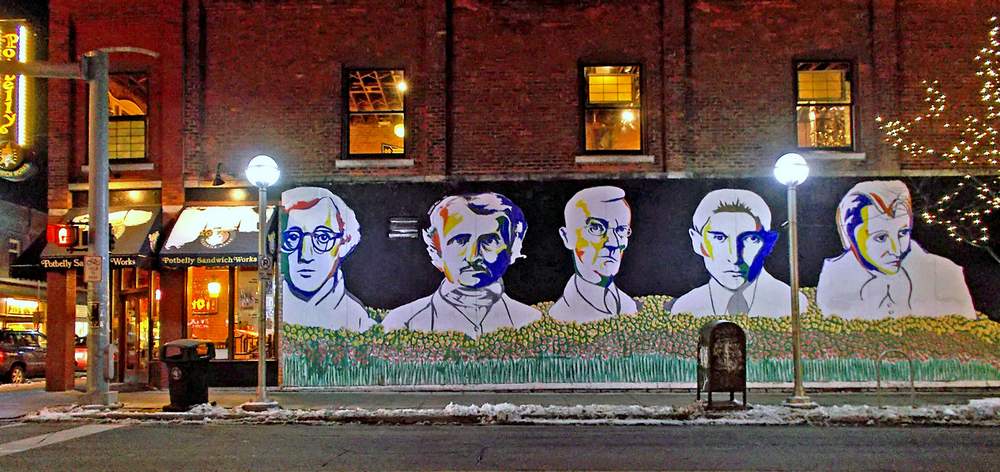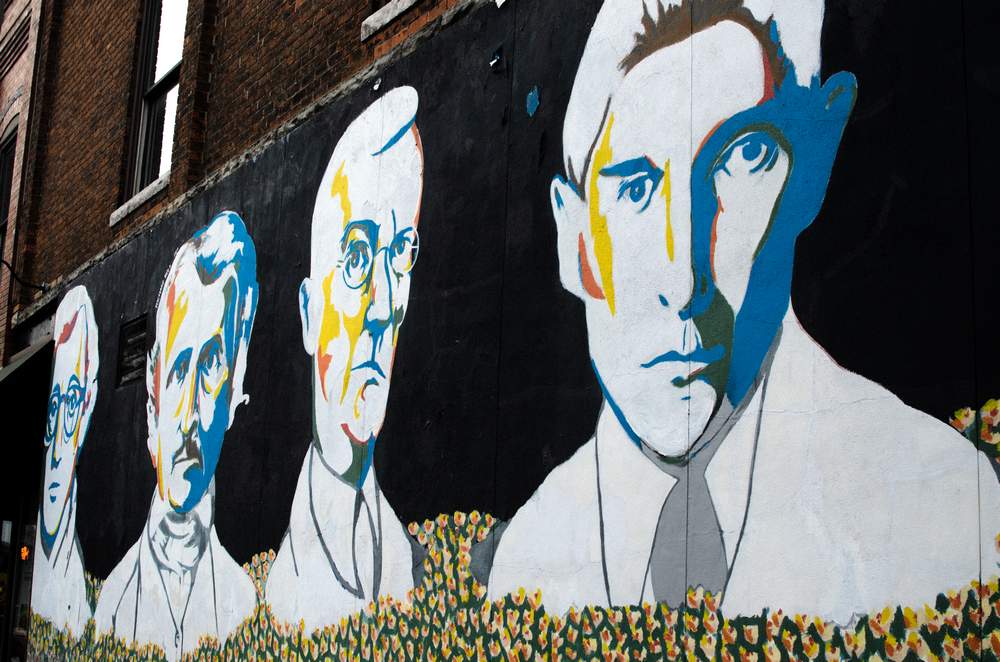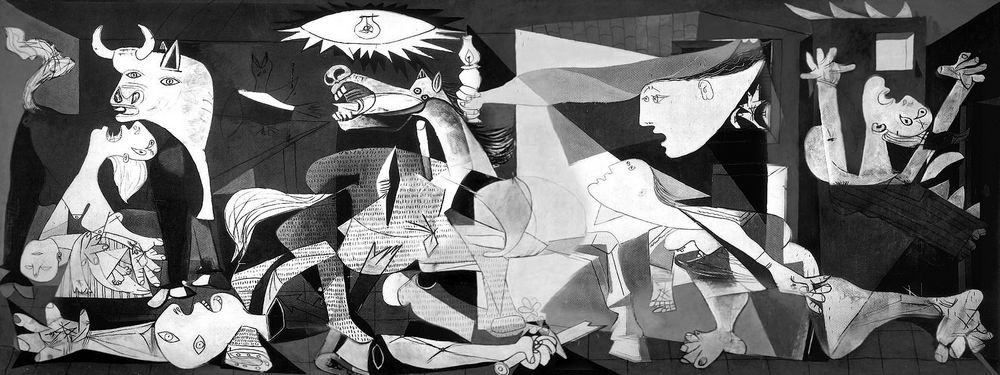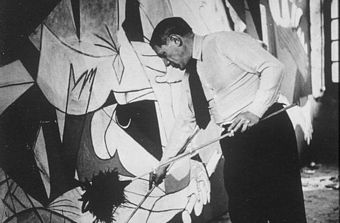
Ann Arbor’s The Bookstore Mural is a famous outdoor mural by artist Richard Wolk located on the corner of Liberty Street and State Street in downtown. The mural is an Ann Arbor emblem and one of the city’s most prominent pieces of public art.
The work, sometime ago known as the Bookstore Mural, was painted in 1984 when David’s Books occupied the corner of Liberty Street and State Street. A Potbelly Sandwich store presently is housed in the building.
Bloomfield Hills-based Richard Wolk, who graduated from the University of Michigan, contacted the management at David’s Books (which closed in 2011) in early 1984 on the subject of replacing a preceding bookstore-related mural with something a bit more fun: actual authors. He started work in March 1984 and completed it in June 1984.
According to a feature in the July 8, 1984 issue of the Ann Arbor News,
The mural certainly rebels against bare cement, but whether it’s an artisitic rebellion is, well, unclear.
Larger than life, the giants of literature beckon passersby into David’s Books, the owner of which commissioned the mural.
Is the mural a billboard, a clever advertisement for the books and ideas behind the wall? Perhaps partly, but to Ed Koster, the owner of the bookshop, who hired the artist, the mural is “aesthetic.”
“I like the portraits themselves,” he said, “but I would have preferred a different background.” The background is in two parts: a starry night sky above a field a flowers.

Measuring about 60 feet by 20 feet, the mural portrays the headshots of five cultural icons, whose work was familiar to the artist Richard Wolk.
- Woody Allen: the American film director, scriptwriter, and actor. Allen has starred in most of his own films, many of which have won Oscars and which hilariously survey themes of psychosis and sexual shortcomings. Artist Wolk chose Woody Allen because of the proximity of the mural to Ann Arbor’s historic Michigan Theater and State Theater.
- Edgar Allan Poe: the American short-story writer, poet, and critic whose fiction and poetry are Gothic and characterized by their examination of the gruesome and the bizarre.
- Hermann Hesse: the German-born Swiss novelist and poet whose written works reflect his concern in spiritual Eastern values and his enthusiasm for Jungian psychoanalysis.
- Franz Kafka: the Prague-born Czech German-language novelist, who wrote in German whose written works portray of an mysterious and terrifying realism where the individual is apparent as lonesome, confused, and defenseless.
- Anais Nin: the French-American writer whose first novel House of Incest (1936) evokes haunting images of love, lust, desire, emotion, and pain. Wolk selected Anais Nin because his 1984 girlfriend liked Nin’s writing.
The Bookstore Mural has also been called The Poet Mural, Liberty Street Mural, and East Liberty Street Wall Mural.
In 2010, the mural gained significant media attention as the original painter was hired to touch it up, 26 years after he originally painted it.
The Bookstore Mural was represented in the official movie posters for the 2011 film, Answer This, which was mainly filmed in various locations around Ann Arbor—the setting is the University of Michigan.
The famous mural is also one of the most prominent public places for the setting of wedding pictures.

 For many years Picasso’s Guernica was actually in
For many years Picasso’s Guernica was actually in